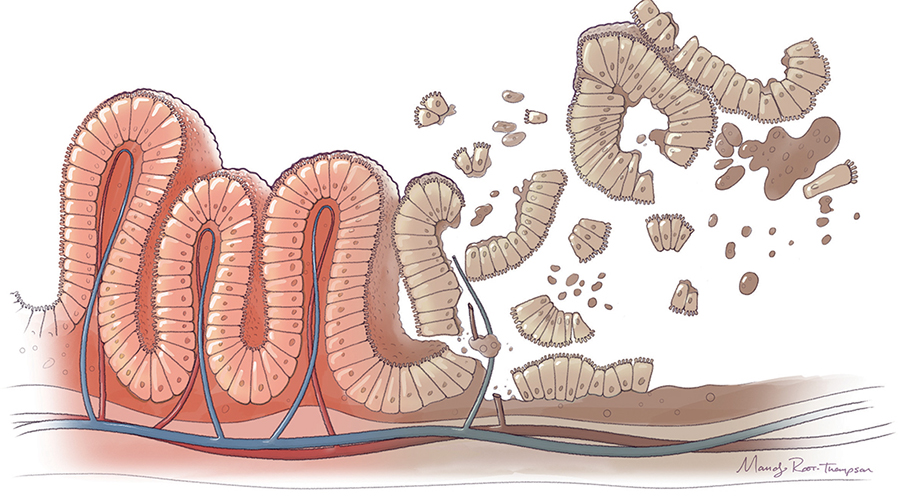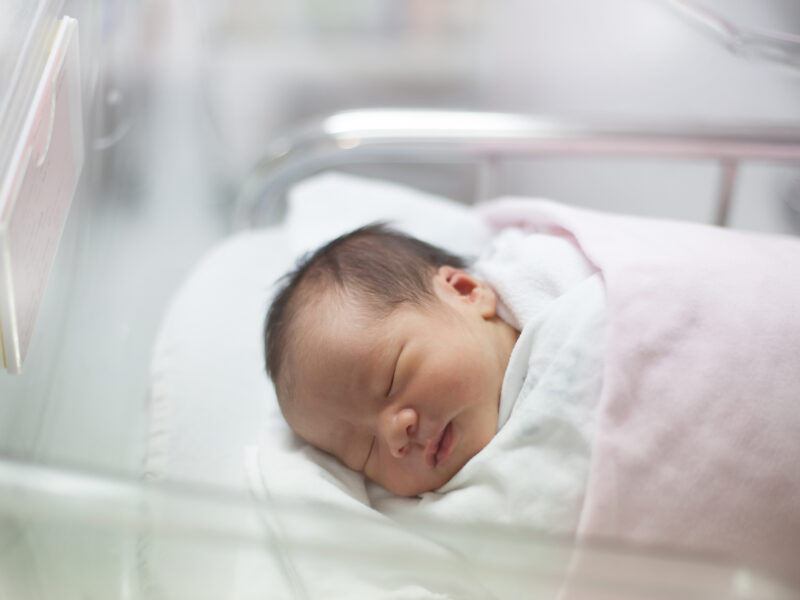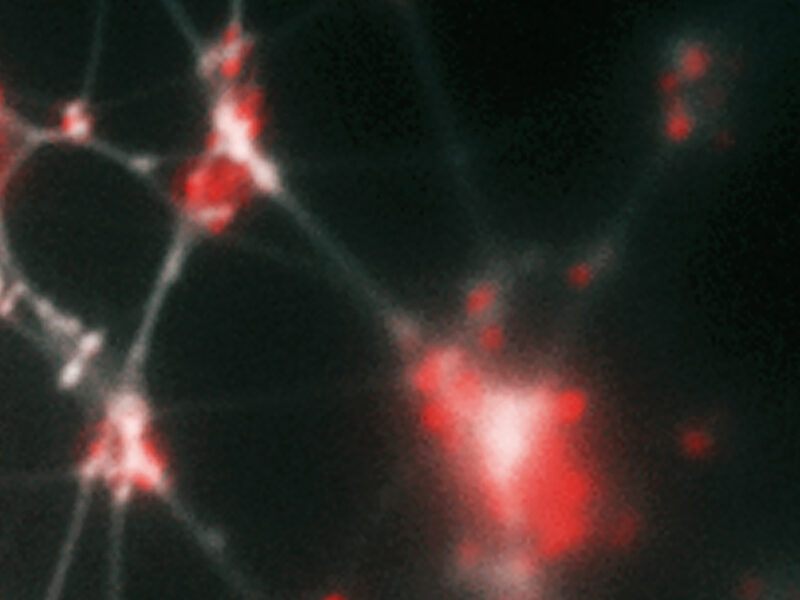Probiotics Delivered in Biofilm State Protect the Intestines and Brain in NEC Model
Probiotics Delivered in Biofilm State Protect the Intestines and Brain in NEC Model https://pediatricsnationwide.org/wp-content/uploads/2019/04/Spring-19-Reveal-Final-NEC_header-smaller.jpg 898 504 Abbie Miller Abbie Miller https://pediatricsnationwide.org/wp-content/uploads/2023/05/051023BT016-Abbie-Crop.jpg- October 23, 2023
- Abbie Miller

Biofilm formulation of Limosilactobacillus reuteri protects against necrotizing enterocolitis in piglet model.
Necrotizing enterocolitis (NEC) is a debilitating and deadly condition affecting infants born preterm. In NEC cases, intestinal tissues become inflamed, and in severe cases, there is ischemia and death of the involved intestines. Treatment for NEC often involves surgery to remove the dying tissue.
“Even after decades of research, little has changed in terms of prognosis for infants who develop NEC,” says Gail Besner, MD, pediatric surgeon and principal investigator in the Center for Perinatal Research at Nationwide Children’s. “Anywhere from 30 to 50% of infants with NEC will die from it. And even those who survive face lifelong challenges including short-gut syndrome and neurodevelopmental delays.”
Dr. Besner and her collaborators Michael Bailey, PhD, and Steven Goodman, PhD, both principal investigators in the Center for Microbial Pathogenesis at Nationwide Children’s, have been working on a novel solution to prevent NEC. They have developed a novel probiotic system that harnesses the durability of biofilms to improve the administration of probiotics to patients. It has been licensed to Scioto Biosciences.
Their latest study, published in Nature Scientific Reports, describes the use of a biofilm formulation of Limosilactobacillus reuteri (Lr) to prevent NEC in a piglet model.
“Our previous studies have shown that the biofilm probiotic works in mouse and rat models,” says Dr. Besner. “But there are many examples where researchers find something that works in rodents, but it fails to translate to humans. We wanted to show that this approach to preventing NEC would work in an animal model that was more similar to humans.”
Dr. Besner and her team therefore adapted the very challenging piglet model of NEC into her laboratory for this study. Notably, preterm piglets and preterm humans are very similar in terms of size and intestinal anatomy. Care that would normally be given to a preterm infant, including medications and fluids, nasogastric (NG) tube feedings, and round-the-clock monitoring, are all included in the model.
The data from the piglet model validated findings in rodent models. Findings demonstrate the superiority of Lr in its biofilm state compared to planktonic (free-living) Lr in preventing the morbidity and mortality associated with NEC. Importantly, Lr in its biofilm state not only protects the intestines from NEC, but protects the brain as well, a finding of great potential importance for survivors of NEC.
“The piglet is an excellent model to help prepare for studies in neonates. The data from this study help us understand the safety and efficacy profile of this novel formulation. This will be helpful as we work with the FDA to plan for future human studies,” says Joe Trebley, PhD, founder and chief executive officer of Scioto Biosciences.
A similar probiotic formulation developed by the team, SB-121, has been tested in a clinical trial in adults with autism spectrum disorder (ASD). The association between the brain and the gut symptoms in autism has been well-established in the literature, with more than half of people with autism also experiencing abdominal problems. The study, which primarily evaluated the safety of SB-121, also found that some participants showed treatment-driven improvements in their ASD test outcomes. The promising results of that phase 1b trial were published earlier this year in Nature Scientific Reports.
“Taken together, the current piglet study, the previous rodent studies, and the recent SB-121 clinical trial provide a solid foundation for pursuing a clinical trial in neonates at risk of developing NEC,” says Dr. Besner. “We are excited to continue pursuing this research with the hope that someday, infants born preterm will have more options to protect them from NEC.”
This research was funded through a $2.3M SBIR grant from the National Institute of General Medical Sciences at the National Institutes of Health. Drs. Besner, Bailey and Goodman are all scientific founders of Scioto Biosciences.
Reference:
Wala SJ, Sanjankila N, Ragan MV, Duff AE, Wickham J, Volpe SG, Wang Y, Conces M, Dumbauld Z, Purayil N, Rajab A, Mihi B, Bailey MT, Goodman SD, Besner GE. Superior performance of biofilm vs planktonic Limosilactobacillus reuteri in protection of the intestines and brain in a piglet model of necrotizing enterocolitis. Nature Scientific Reports. 23 Oct 2023 [Epub ahead of print].
Image credit: Mandy Root-Thompson for Nationwide Children’s
About the author
Abbie (Roth) Miller, MWC, is a passionate communicator of science. As the manager, medical and science content, at Nationwide Children’s Hospital, she shares stories about innovative research and discovery with audiences ranging from parents to preeminent researchers and leaders. Before coming to Nationwide Children’s, Abbie used her communication skills to engage audiences with a wide variety of science topics. She is a Medical Writer Certified®, credentialed by the American Medical Writers Association.
- Abbie Millerhttps://pediatricsnationwide.org/author/abbie-miller/
- Abbie Millerhttps://pediatricsnationwide.org/author/abbie-miller/
- Abbie Millerhttps://pediatricsnationwide.org/author/abbie-miller/
- Abbie Millerhttps://pediatricsnationwide.org/author/abbie-miller/







